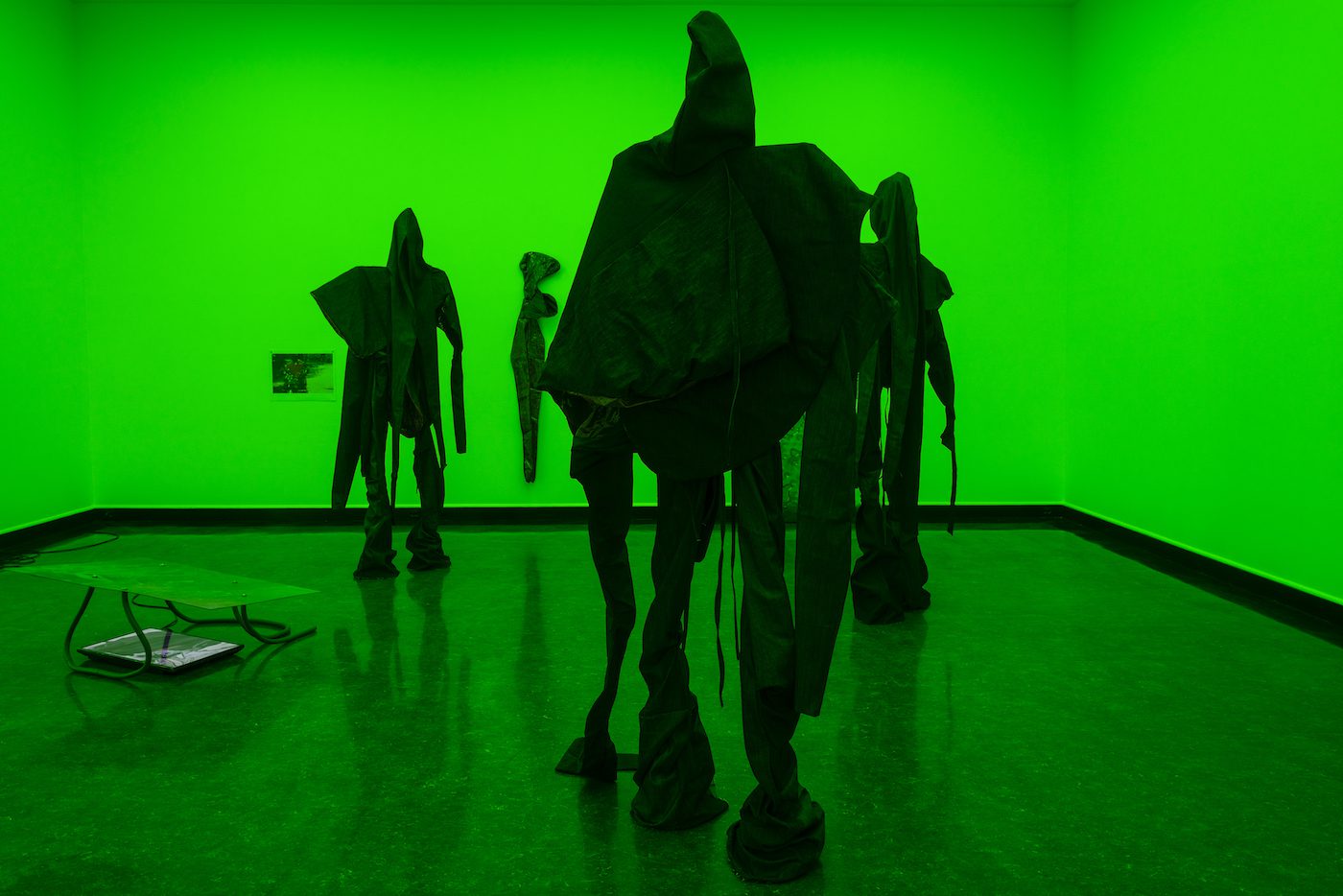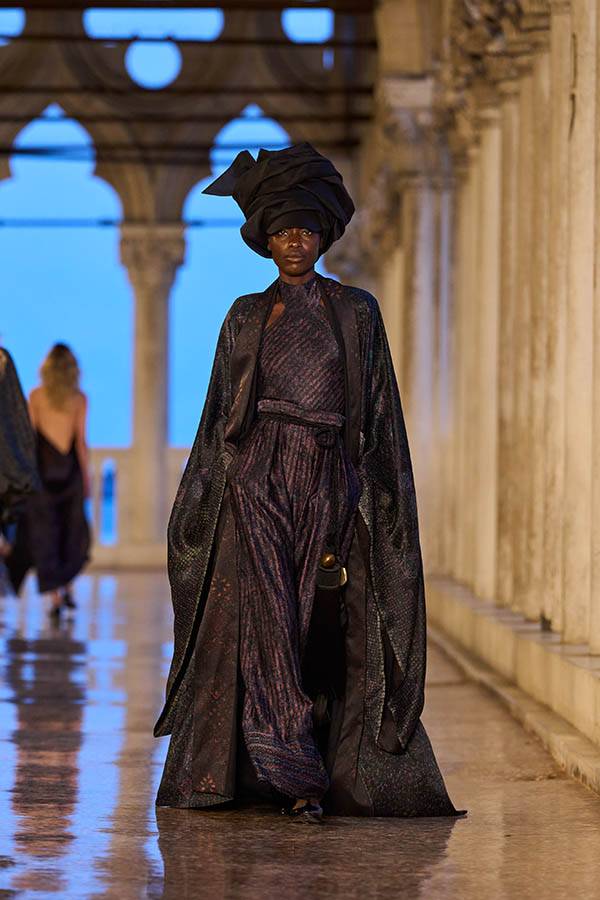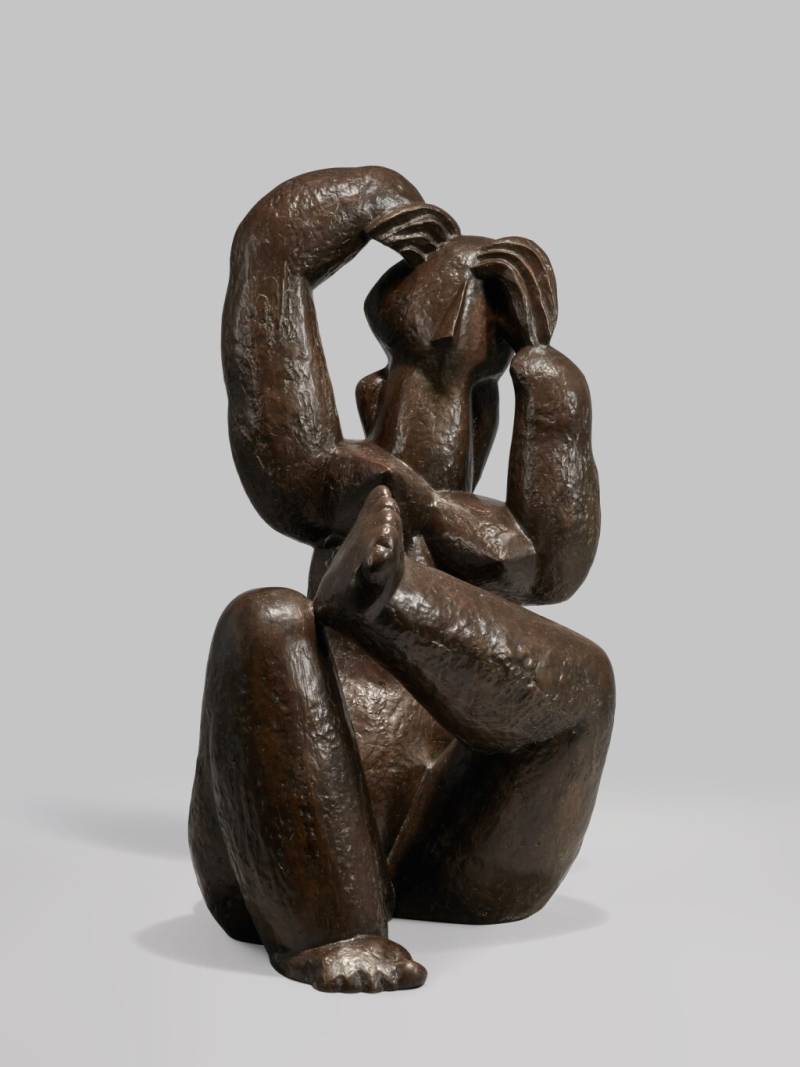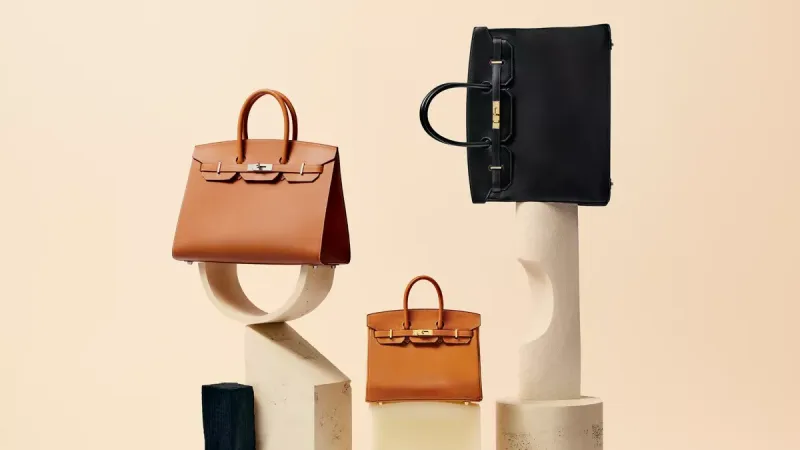“There’s definitely an element of horror in my work. And I’m fascinated by the horror in itself.” Sandra Mujinga uses her art to investigate ideas of the body and the privilege of invisibility. “The starting point is the body. Or this idea of the body. Memories of the body. And maybe an invisible body that is still very much present.” Sandra Mujinga’s characteristic installations often consist of multiple, large hooded figures. The figures don’t have a face even though they resemble human-like bodies. “They are standing still in the dark and mimicking us in order not to be captured,” she explains. For Sandra Mujinga, being granted invisibility is a privilege. Through her art, she asks questions such as: “What is an intimidating body? What is projected onto a body? Also, thinking through the black body. And how expectations and the dehumanization of the black body throughout history and horror also play into it.” Mujinga adds: “Thinking about the idea of: what does it mean to be granted invisibility when the spaces are inherently violent? Or did not include you to begin with?” From her studio in Oslo, Norway, Sandra Mujinga creates her works. A new piece usually starts with a new skin made of fabrics that she assembles in new ways, by sewing, mending, and weaving. “I’m very hands on,” she says and continues: “I really want to trust the process. The goal in itself is never really about me recreating specifically what’s in my head. It’s more like a meeting with the material, that is a dialogue.” The sculptures are often seen in a green lit room, a color resembling a green screen known from film and TV-production. The green light echos in Mujinga’s many video work that often uses an actual green screen: “The green screen is always a space for potential. It host so many things and it can also host our imaginations,” she says. One of the qualities of the green screen is also the fact that it can hide the subject you put in it, which speaks to Sandra Mujinga’s investigation of a disappearing body. She adds: “It always made sense to think of green screens in relation to world-building.” Science fiction is also a key inspiration for the artist.

Related article - Phone Tough Cases

Related article - Unisex Softstyle T-Shirt

“My entire to science fiction was through Afro-futurism,” Sandra Mujinga says. To her, the classic narrative of a science fiction tale of people going to an unknown place is undoubtedly linked to colonialism. “For me science fiction is a reminder that not everyone has access to their story and history.” This is also something that Mujinga explores through her practice. “I think art can open doors for you to be truly yourself. You can be truly yourself for like two minutes.” Sandra Mujinga (b. 1989, Goma, Democratic Republic of the Congo) is a multidisciplinary Norwegian artist and musician who works between Berlin, Germany, and Oslo, Norway. Sandra Mujinga’s work plays with the economies of visibility and disappearance. Her practice is driven by a profound interest in the body - and its absence. Mujinga is known for her uncanny installations, ghostly hooded figures, sculptures resembling flayed skins, and for a hybrid of creatures that are made instruments of observations. Sandra Mujinga takes inspiration from animal survival strategies (such as camouflage) as well as concepts of science fiction such as “world-building” and Afro-futurism. In 2021 Mujinga won the Preis der Nationalgalerie. She participated in the 59th International Art Exhibition of La Biennale di Venezia ‘The Milk of Dreams’ created by Cecilia Alemani. Her solo exhibition ‘I Build My Skin With Rocks’ opened at Hamburger Bahnhof in December 2022. Recent solo exhibitions include Closed Space, Open World, Malmö Konsthall (2022); LACK Sandefjord Kunstforening, Sandefjord (2022); Solo Oslo Munch, Oslo (2022); Sandra Mujinga, Gothenburg Art Museum (2021); Worldview, Swiss Institute, New York (2021); Spectral Keepers, The Approach, London (2021) and Midnight, Vleeshal, Middelburg (2020).



